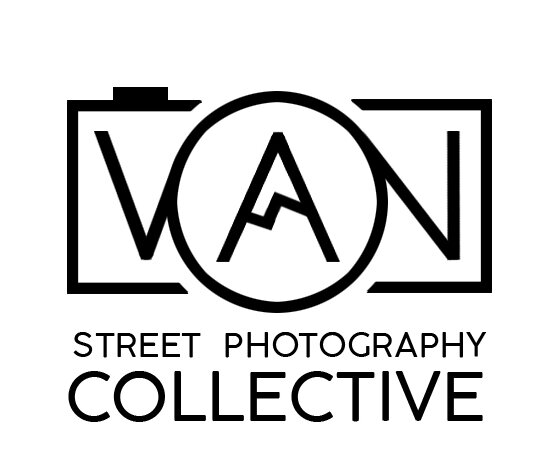Using Film in Street Photography
Why Shoot with Film?
Photo by Chris McCann @tatsu_is_tatsu,
Camera: Minolta X-700
Film: Cinestill 800T
It’s more challenging: It forces you to understand the exposure triangle and get the shot right the first time.
Slows you down, makes you think about and imagine what your photos will (hopefully) look like.
With some cameras you can shoot without batteries (but either have a pocket light meter or know your sunny 16)
More tactile and enduring
It’s fun to experiment with different film / camera combinations
The aesthetics of film aren’t reproducible, grain is good.
Excellent film cameras can be had for around $100 so it’s affordable (although the cost of film and developing can add up)
Great conversation starter … people are often surprised that you’re shooting with a film camera and will ask questions (such as “do they still sell film”)
“Shooting film will calm, relax you. Like zen meditation of photography. Less anxious feelings about the results of the pictures, more enjoyment during the process of making pictures. More consistent aesthetic over long periods of time. Less stress of looking through (too many) digital pictures.”
– Eric Kim
A few of our favorite film cameras for street photography
There are many great film cameras out there and the good news is that many are in good shape and affordable. Here are a few of our favorites. I
We asked our followers for their favorite analog cameras … Among the SLRs, Nikon got a lot of love from our members … favorites are the Nikon FM, F2 and the F3. Pentax was also popular with folks recommending the 1000K, the Spotmatic and the ME. The Olympus OM-1 is a classic fully manual SLR with a great Zuiko lens.
For rangefinders, the Leica M6 is an obvious choice while the Canonet G-III QL 17 is a more affordable option.
Point and shoots are also a popular option for shooting film because they are light, compact and easy to use (unlike some of the SLRs). A few excellent choices are the Contax T-3, the Yashica T5, and the Olympus MJU II and XA.
Photo by Jake Wong @2xu2xu
Camera: Pentax ME Super
Film: CinestillT 800
Photo by Craig Sheppard @streetnothings_
Camera: Canon EOS5
Film: Portra 160
What about film?
Colour film
Cinestill 800 is a favorite of ours. Great cinematic tones, especially at night (around $18-20/roll)
Portra 160, 400 and 800 ($18 roll)
Lomography 800 ($36.90 for 3 rolls, can be difficult to find)
Black and White
Kodak Tri-X 400 was a favorite among our followers. Very versatile with nice grain.
ILFORD HP5 Plus (rated at 400 but can be pushed to 3200)
Ilford Delta or TMAX 3200 Professional are good choices for night photography.
Things to consider when buying a film camera
Photo by Ryan Walter Wagner @ryanwalterwagner
Camera: Pentax K1000
Film: Fuji Superia X-tra 400
What kind of street photography do you do?
Is night photography a priority?
Are you comfortable shooting fully manual? Or do you want some or full automation? Shutter or aperture priority? Are you okay with manual focus?
Make sure you check light seals, lens fog/mold, shutter functioning before you buy or buy from a reputable seller that refurbishes older cameras
After you bring home your camera, watch a video or two on how to use it and its various functions. Most popular film cameras have many helpful videos that will give you important tips about how to use your new find.
Some older film cameras were originally made to take now banned mercury batteries. There are several work arounds, each with their own pros and cons. In many cases you can also simply shoot without the battery if its just powering the light meter.
Where to …
Buy film cameras and film in Vancouver and Beyond
You can find some great cameras on Craig’s List and other websites. Just use common sense and ask to inspect the camera before purchasing.
Blue Moon Camera (Portland). Blue Moon will mail you your camera / film. They will also process film you send to them.
Film Photography Store (loads a unusual film, cameras, helpful advice)
Develop your film
Mark Klipa @250_35
Camera: Nikon FE
Film: Cinestill 800T
London Drugs (will do C-41 (35mm, 110, 126 and APS) and E-6 slide film) including ILFORD XP2 Super 400 BnW film.
Note: Not every location has an in house lab
Rocket Reprographics (Gastown) BnW and color film processing (does not develop E-6)
Note: If you drop off on the weekend you won’t get back until Tues, otherwise usually same day.
The Lab develops C-41, E-6 and black and white film.
There are a number of labs where you can mail in your film for developing as well. and of course you can also develop your film at home. See resources below.
Resources
Film Street Photography Manual by Eric Kim
Film Photography 101: A Video Course for beginners
Film Photography for Street Photographers: The Basics (Premium)
Develop Film at Home! A Step-by-Step Guide
Developing your own film – a how to guide
36 Shot Challenge
Limit yourself to taking only 36 shots
Keep the ISO the same for all 36 shots
No chimping, don’t review your photos until you’ve taken all 36 shots
Use manual focus
Tag #vanspc_36
Have comments or suggestions for shooting street photography with film? Leave them in the comments below.





